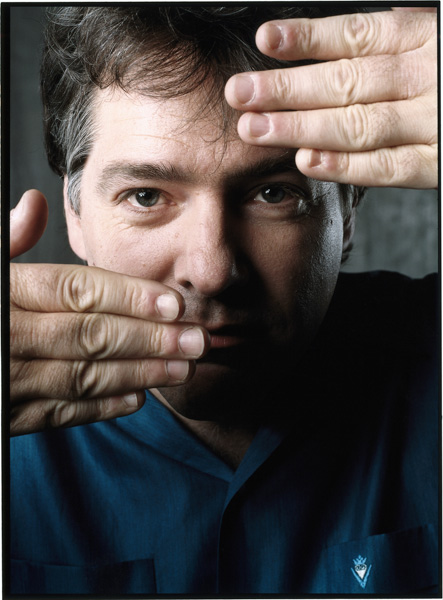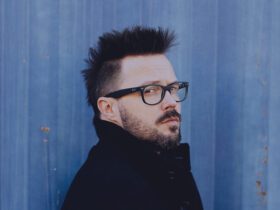Béla Fleck formed Béla Fleck and the Flecktones in 1988 after establishing himself in the American progressive bluegrass band New Grass Revival. Fleck is considered one of the greatest banjo players in modern music, and helped introduce the instrument to a wider audience.
Fleck is currently performing his concerto for banjo with orchestras across the nation. In advance of his performances in Buffalo on March 16th and 17th, Fleck agreed to an interview with Backstage Axxess correspondent Thom Jennings.
TJ: You have some ties to the area, your banjo teacher Tony Trischka is from Syracuse. Can you talk about his influence on you as a performer and if you still keep in touch?
BF: Tony has been one of the most forward thinkers on the banjo since he emerged on the scene in the early 1970s. I was lucky enough to study with him, and he remains one of the most iconic and interesting banjo players out there. We are very close friends. I’d say his influence on me is the biggest of anyone’s, except for Earl Scruggs and some of the traditional players like J D Crowe. In the 1980s, my playing attempted to be a marriage of those two schools, Northern Progressive and Southern Traditional.
TJ: Other reported influences of yours include Earl Scruggs, who passed away last year. Could you reflect on the influence of Scruggs and Bill Monroe on bluegrass music and what they meant to you personally?
BF: Earl Scruggs is known for the impact he has on any ‘future banjo player.’ When you hear him play, you have to go find a banjo and learn how to play it. There is something so riveting and almost tribal about his playing. I got to know him pretty well in his last decade on earth, and I treasure that experience. In fact, I dedicated the banjo concerto to him, and he came to the premiere!
TJ: What inspired you to combine jazz with bluegrass?
BF: It started with hearing Tony Trischka’s musical blends, and continued with simple curiosity. I wasn’t so much interested in combining them, I just wanted to be able to understand and perform jazz on the banjo. Hearing music like Chick Corea, Charlie Parker and Thelonius Monk made me love and appreciate the variety that was possible in music. I wasn’t concerned about what kind of music I was listening to, just that I loved it.
TJ: Your tenure in New Grass Revival was an important period for the band. Do you think NGR was ahead of their time considering the popularity of a band like Mumford and Sons?
BF: I actually feel that New Grass Revival was just right for their time. It was a natural musical outgrowth based on what was happening then. Everyone in the group’s musical trajectory made them the right person at the right time for the band, and because we were edgy and different, we were able to build a place for ourselves on the scene. We were highly appreciated for what we brought. It was a golden time for all of us.
TJ: Could you talk about how you and Dave Matthews began working together?
BF: I remember when the Flecktones used to play nice theaters and on the way into town we’d see Dave and the band were playing at these little tiny rock clubs. One day we turned around and they were playing arenas – we were like – how did that happen? Carter has a long relationship with Victor and Future Man, knowing each other from the Norfolk/Newport News region back when they were all coming up. So one day we were invited to open for Dave, and it opened the door to a lot of lovely interactions. I was brought in as a guest for their first actual stadium tour, and sat in with them an uncountable amount of times. I love playing with them. I also was thrilled to be invited to play banjo on DMB’s album ‘Beneath These Crowded Streets.’
TJ: Was the 32 minute version of “#41” performed with DMB in 2002 supposed to be extremely long or did it just evolve into a long jam?
BF: I remember there was a joke about trying to make it 41 minutes, but we never quite made it that far! It was always an epic jam when Flecktones and DMB shared the stage.
TJ: You will be performing your Concerto in Buffalo, the idea of writing a concerto seems daunting. Why did you decide to take on such a huge task and what proved to be the most challenging aspects of trying to develop the Concerto.
BF: This was one of these things I always have wanted to do, but I wasn’t in such a big hurry because I knew how hard it would be to pull off. But placing a banjo in the middle of a symphony orchestra was just too hard to resist! Finally, it was the right time. I was involved in co-writing two concertos with Edgar Meyer, who really knows what he is doing in that world, and I watched him like a hawk while we wrote. Nashville Symphony gave me an opportunity to do it, and I went for it. It took me a year really, from start to finish. My biggest challenges lay in orchestration, and thinking in terms of a long form, 35 minutes of music. I didn’t know much about any of the orchestral instruments – so yes – it was challenging. But I just kept working at it, and gradually I got to the point where I felt like I had something to offer. Now I have performed the piece with five (5) or six (6) orchestras, and I feel much more confident about the whole process. I would love to do more of this kind of composing and I have already written another piece for banjo and string quartet.
For more information on purchasing tickets to the shows in Buffalo at Kleinhans Music Hall, please go to: Tickets.
For more information on Bela, please go to: Bela Fleck.







